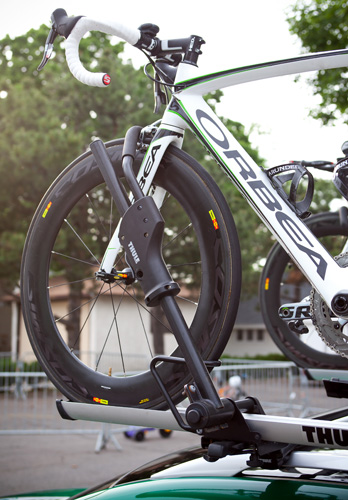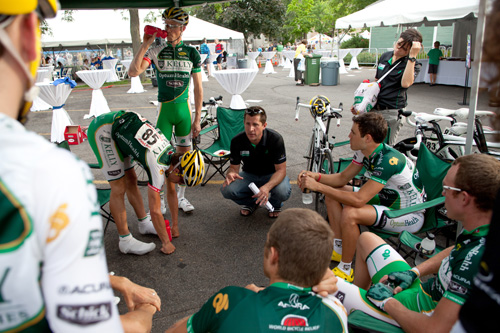Earlier this summer, during the Nature Valley Grand Prix pro bike race series in Minnesota, we had a chance to mingle with the riders and staff from the Kelly Benefit Strategies-OptumHealth pro cycling team. The Minnesota-based squad worked hard during the event and was able to get young-gun rider Jesse Anthony on the top of the podium at the end of a week of racing. To get a behind-the-scenes look, we sent our resident bike dork, T.C. Worley, to the race sidelines with a notepad to dig up dirt on KBS-OptumHealth’s race strategies, post-race muscle recovery, bike maintenance, and must-have cycling gear for the Nature Valley Grand Prix and other events of its ilk.

T.C. Worley: You guys have sponsors for your equipment, and you all ride Orbea frames, but do you get to choose what equipment goes onto your individual bikes?
Alex Candelario: Sort of. We have five different wheelsets from Mavic for racing and training. We can also choose different tires for different courses, but mostly we trust our mechanics to decide for us. Everybody uses bars from Hed and SRAM groupos.
What about specific fit items like seats? Are you allowed to at least choose your own saddle?
Candelario: Yes, we’re sponsored by Selle Italia saddles, and they have many models we can choose from.
[Gear Junkie aside: I couldn’t help but notice one rider was using a Fizik saddle!]
I’m not seeing any alloy frames or wheels on race bikes this week. Is anyone racing alloy anymore?
Marsh Cooper: Carbon is much faster. I used our deep-dish carbon wheels for the first time during the prologue this week. I couldn’t believe how much faster they were! I looked at my computer and thought, Wow! I’d say 2 or 3KM faster on the flats. [For such uses] you just can’t be competitive on alloy anymore. Mechanic Bob Gregorio: Most elite racers are on carbon frames these days.
Tell me more about deep-dish wheels. A must for time trials, it seems?
Jacob Erker (a team manager): Yes, for sure. We have three or four sets of the really deep dish Mavics (the Carbone 80s, a non-production model) that we swap from bike to bike on prologue days. It’s absolutely worth the trouble for the performance increase.










